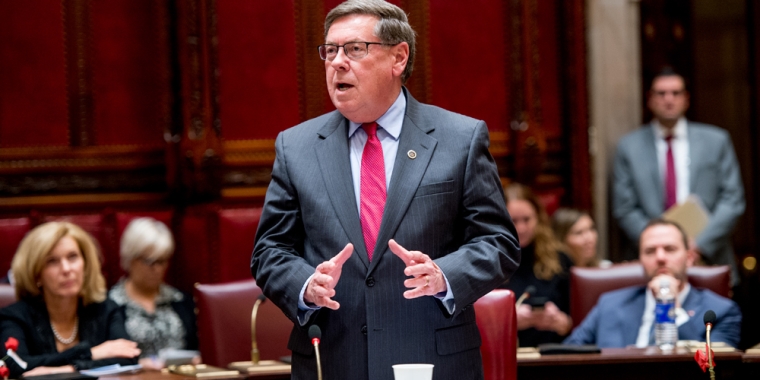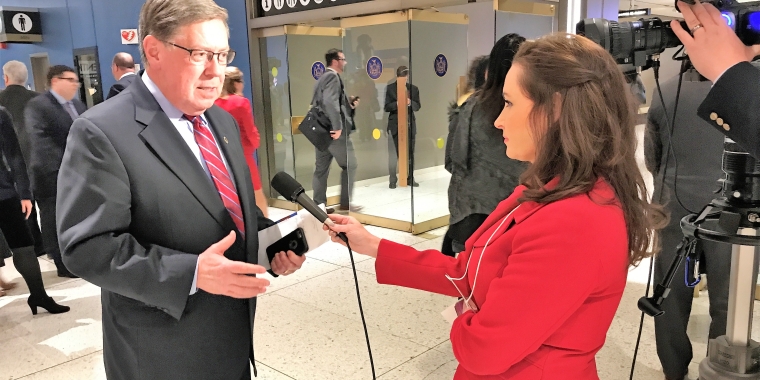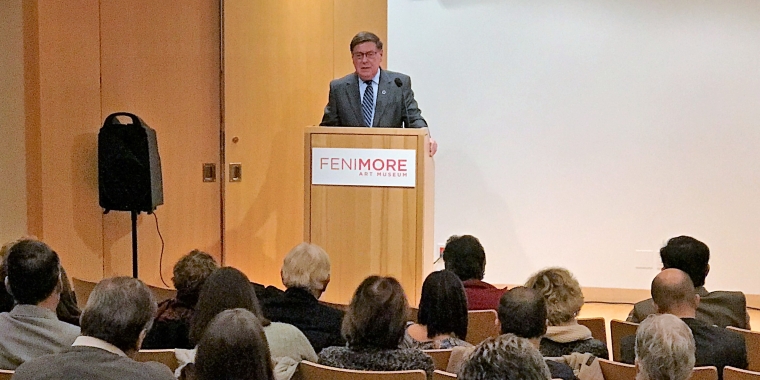
The Future of Farming
James L. Seward
February 18, 2010
-
ISSUE:
- Agriculture
- Education

As our world evolves and technological advances propel us forward at lightning speed, one constant remains – agriculture. No matter how smart our cell phones become or how large our television screens grow, agriculture persists as the economic, social and environmental binding force.
In New York state, agriculture is still our number one industry. There is no shortage of specialties that fall under the agriculture umbrella. Crop farmers and livestock producers of all shapes and sizes can be found far and wide. New York is the nation's third-largest dairy state producing 1.4 billion gallons of milk annually. In total, agricultural production returns over $3.5 billion a year to the farm economy. About 25 percent of the state’s land area, or 7.55 million acres, are used by more than 35,000 farms to produce a very diverse array of products.
Farming is also the tie that binds many communities together socially. Farmers markets, harvest fests and other fine events are celebrated year round. These types of gatherings are reminders of our heritage and also a welcome chance to come together and stay in touch with friends and family.
With our growing environmental concerns we also look to the farming community for guidance. Farmers have always been among the best stewards of the land; after all, it is a central part of their livelihood. More and more the news media draw attention to the development of “green” industries. Nothing is greener than agriculture. In fact, many technological breakthroughs take place on farms both small and large.
Agriculture contributes so much to our daily lives, but it is an industry that has been hit by hard times. It is also a demanding occupation and those who take up the farming mantle must be very special. Preparing the next generation of farmers is also a critical role. All of those individuals are being duly recognized during the last week in February- National Future Farmers of America Week.
The FFA was founded in 1928 by thirty-three young farm boys at a hotel in Kansas City, and is currently made up of more than half a million members ranging in age from 12 to 21. There are over 7,400 chapters headquartered in every state in the nation, Puerto Rico and the Virgin Islands. More than 11,000 advisors and agriculture teachers work with students on subjects like agriscience, biotechnology, and horticulture. FFA students divide their time between classroom learning and hands-on experience in the field. After high school many of these students go on to productive careers in various agriculture fields. Others parlay their FFA knowledge into further studies at colleges and universities and graduate with advanced degrees.
It is clear that the FFA has played a significant role in making certain that agricultural education is a mainstay of our communities. I am also confident that the FFA will continue to connect students to exciting careers in the science, business and technology of agriculture.
The FFA creed written by E.M. Tiffany includes the stanza:
“I believe that American agriculture can and will hold true to the best traditions of our national life and that I can exert an influence in my home and community which will stand solid for my part in that inspiring task.”
Wonderful, meaningful words which offer a valuable sentiment, whether applied to agriculture or any vocation.
The FFA promotes, among other things, citizenship, volunteerism, patriotism and cooperation. The motto, “learning to do, doing to learn, earning to live, living to serve” gives direction of purpose to the students who take an active role in succeeding in agricultural education.
I am proud to represent a number of fine Future Farmers of America chapters and believe their dedication to the mission of premier leadership, personal growth and career success through agricultural education is admirable.
I salute all of the youth, teachers and advisors and wish them the best during National FFA Week.
Share this Article or Press Release
Newsroom
Go to Newsroom
Governor's State of the State Lacks Boost for Upstate Economy
January 3, 2018

Diverse Local Economic Development Projects Receive State Funding
December 13, 2017

